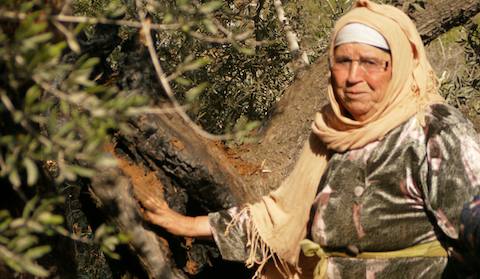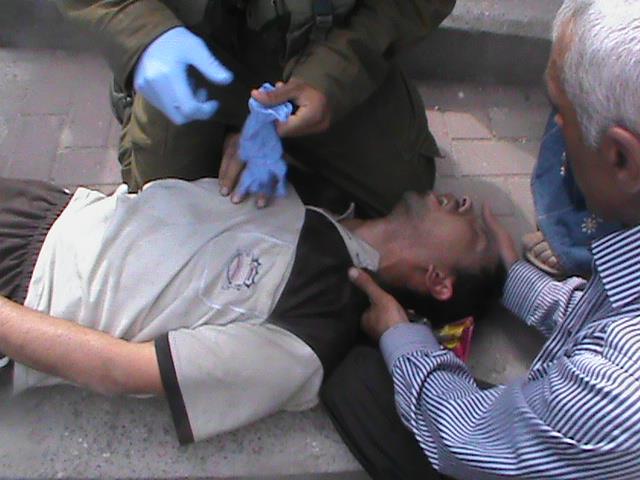Tag: Settlers
-
Arson Attack on Olive Trees in Qaryut
14 October 2012 | International Solidarity Movement, West Bank Latif Ali with one of her trees that were destroyed. Last night in the West Bank village of Qaryut, 12 Palestinian owned olive trees were irreparably destroyed in a late night arson attack by Israelis from the illegal West Bank settlement of Eli. The attack follows…
-
Settlers Attack and Injure Palestinians Harvesting Olives in Tel Rumeida
12 October 2012 | International Solidarity Movement, West Bank In two separate incidents on Wednesday 10th and Friday 12th October 2012 settlers from the illegal settlement in Tel Rumeida, Hebron stole olives from two trees belonging to Jawad Abu Eisheh and attacked his family whilst they attempted to harvest from their land. Between 2pm and…
-
Hebron: Soldiers invade Kurtuba School, attempt arrest
By Ruby Astaire 26 September | International Solidarity Movement, West Bank Israeli soldiers invaded a Palestinian school in the city of Hebron with intentions to arrest two sixth grade students after false allegations of throwing stones at a nearby checkpoint. Israeli soldiers based in the Palestinian city of Hebron entered the Kurtuba school on Sunday…


